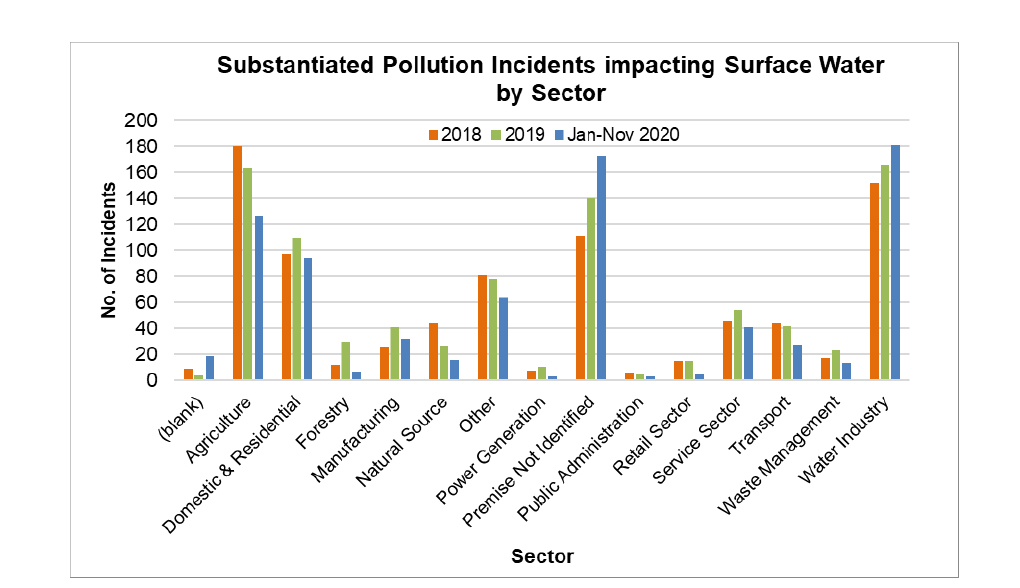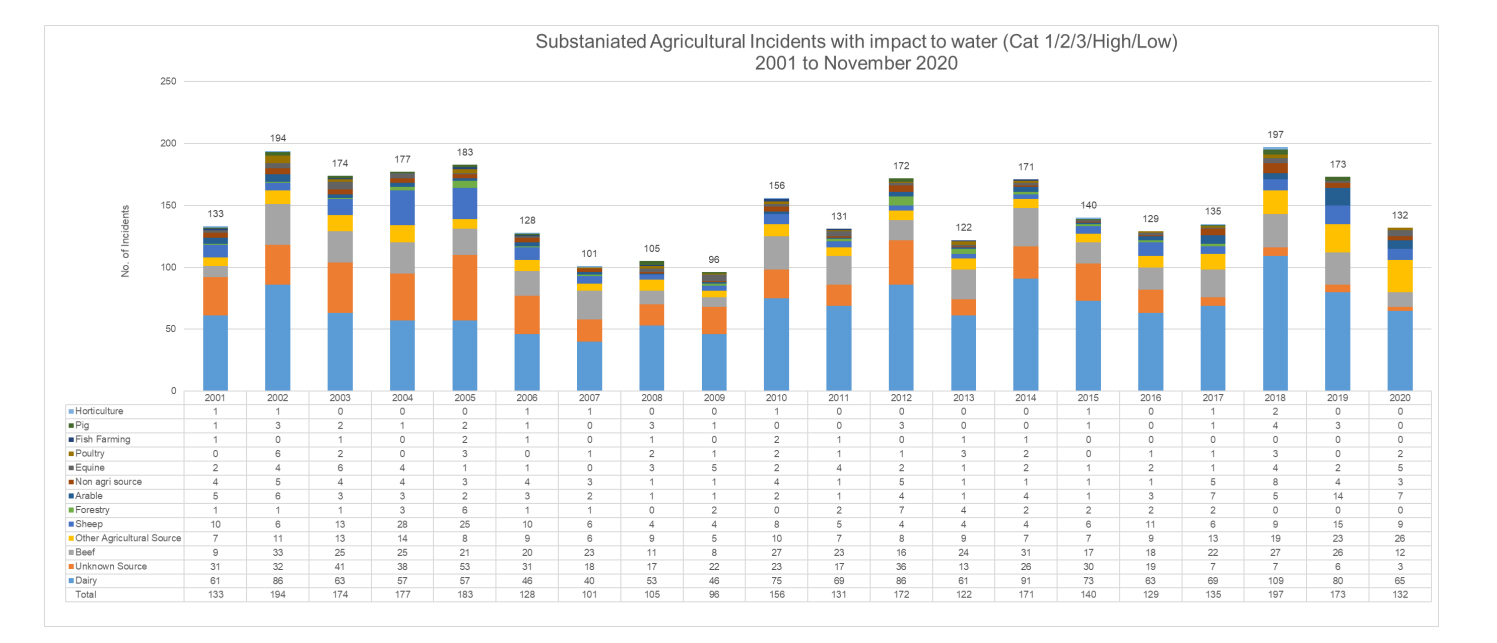Agricultural pollution is a long-standing issue in Wales.
In the three years prior to 2021, agricultural pollution incidents averaged three per week. More recently, agriculture has been identified by NRW as contributing 62% of the total phosphorous load to rivers and as being the most frequent cause of Water Framework Directive failure. A total of 93% of ammonia emissions (which have negative impacts on human health and biodiversity) can be traced to agricultural sources.
The problems have grown worse with the general intensification of agriculture and the switch from systems based on farmyard manure to slurry. The intensification of poultry has also caused major problems for the Wye and is now threatening other catchments in Wales. Other agricultural practices that are a cause for concern include the growing of fodder crops and the spreading of digestates from anaerobic digestion plants.
The problem was recognised by Welsh Government when it brought in the Water Resources (Control of Agricultural Pollution) (Wales) Regulations 2021.
The Dairy Industry
The Welsh Government graph shows that the dairy industry has been the largest contributor to reported pollution incidents to surface water from agriculture since 2001.
The close correlation between the maps of the distribution of cattle in Wales and the distribution of agricultural pollution incidents to water highlight this too. North-east Wales and south-west Wales showed the highest concentration of dairy cattle and south-west Wales the highest concentration of pollution incidents.
The Poultry Industry
This sector has attracted much attention in recent years due to its increase in Powys and the Wye catchment generally. This coincided with high phosphorus levels on that river and increasing algal blooms. There has also been a significant increase of poultry units in Pembrokeshire as a result of investment in Capestone Poultry.
The sector can be split into two parts: broiler production and egg production. Closed broiler and egg production produce large quantities of litter which is contained. This litter has a high phosphorus content and issues arise from how that litter is dealt with, whether that be by incineration, the use of bio-digestion or land spreading. Where producers do not operate closed systems the process of rearing itself poses a risk to the environment. The issues involving litter and excess phosphorus have been highlighted by the RePhoKUs project run by Lancaster University.
Anaerobic Digestion
Three of the highest fish kill pollution incidents in Wales in recent years have been as a direct result of failure of anaerobic digestion plants.
In March 2023, Afonydd Cymru submitted a joint letter with Fish Legal to both the Minister for Climate Change and the Minister for Rural Affairs regarding significant concerns with respect to the operation of anaerobic digestion plants in Wales.
We have found evidence of anaerobic digestors operating without planning permission, with no permits for discharge in place and with a lack of regulation of nutrient management plans. Of particular concern is the lack of regulatory control over AD digestate under waste regulations and no consideration of the cumulative effects under the Habitats Regulations for catchment spreading of digestate on failing SAC rivers.
Substantiated pollution incidents reported to NRW impacting surface waters by sector for 2018, 2019 and Jan-Nov of 2020 (click to expand). The graph shows that Agriculture and the Water Industry are the biggest contributors of substantiated reported pollutions. Source: Welsh Government Agricultural Pollution Incident Data.
Pollution incidents from agricultural sources reported to Natural Resources Wales from 2001 to 2020 (click to expand). The dairy industry is shown to be the largest contributor to reported pollution incidents to surface water throughout all the years. Source: Welsh Government “Agricultural Pollution Incident Data”


